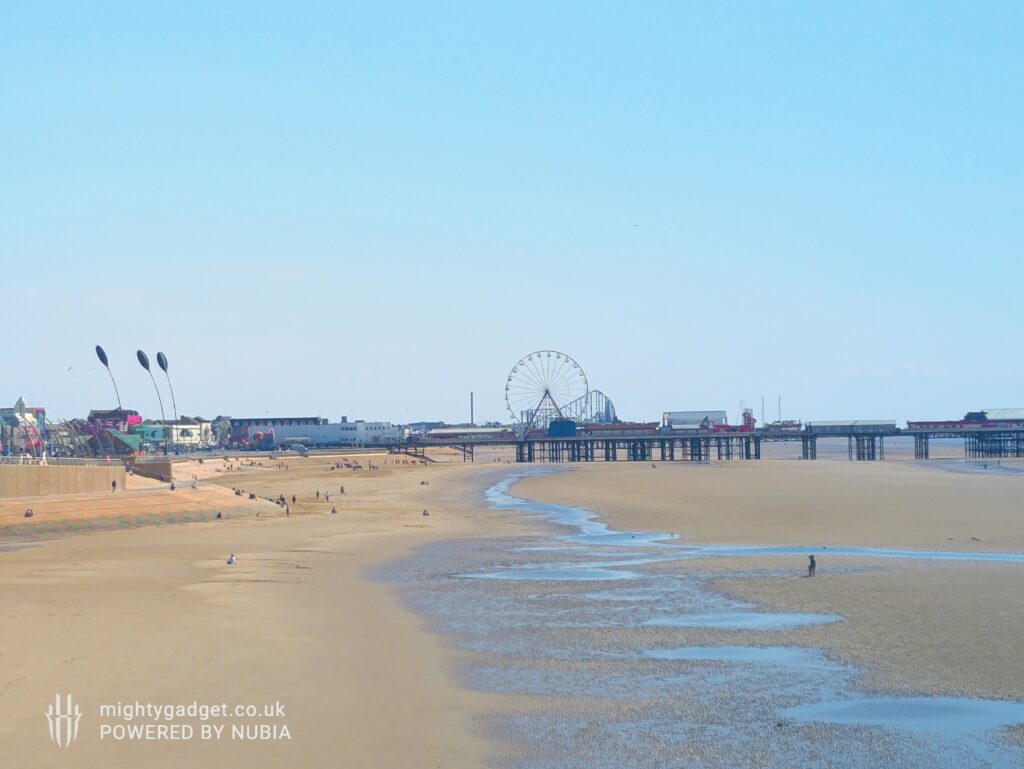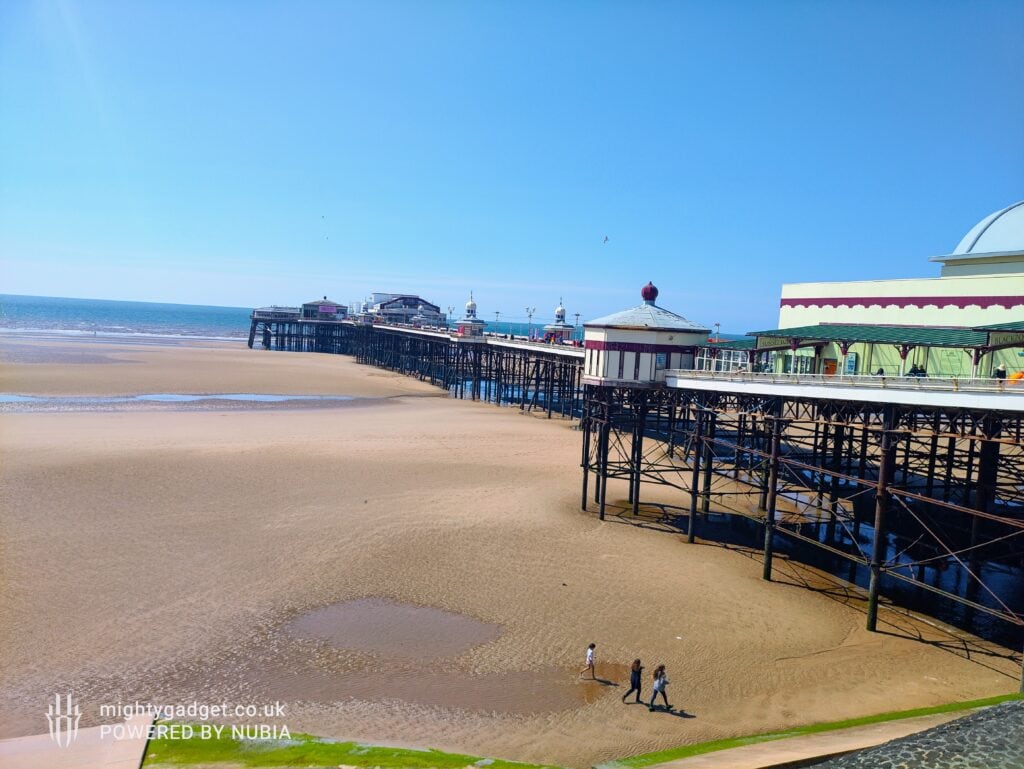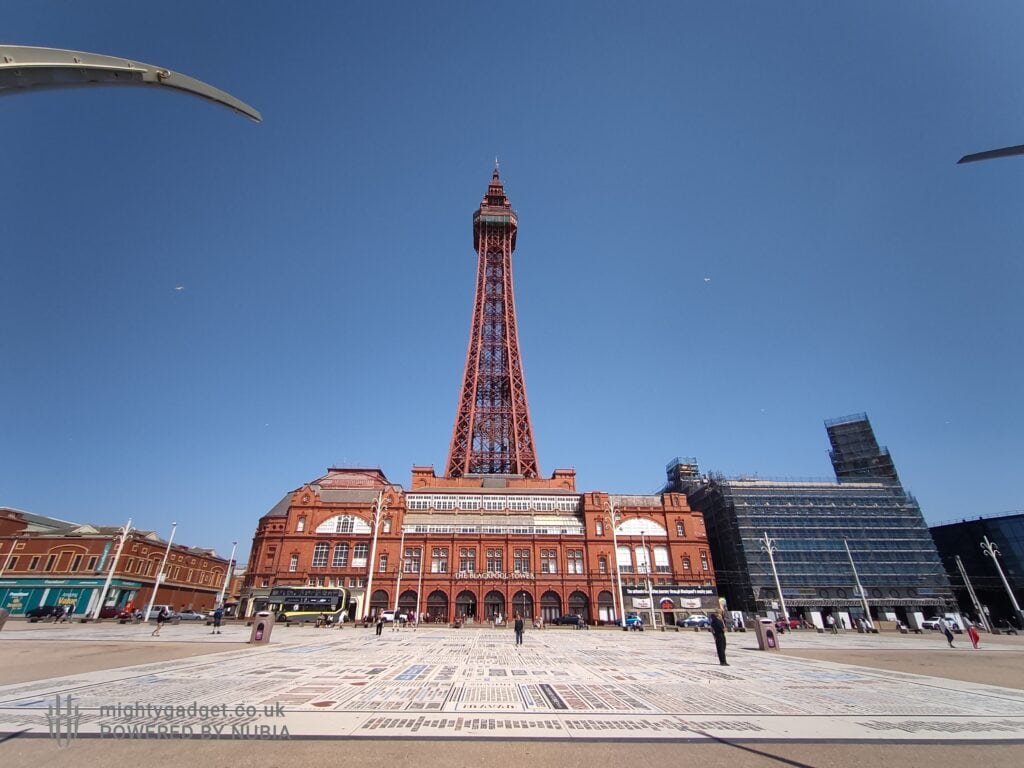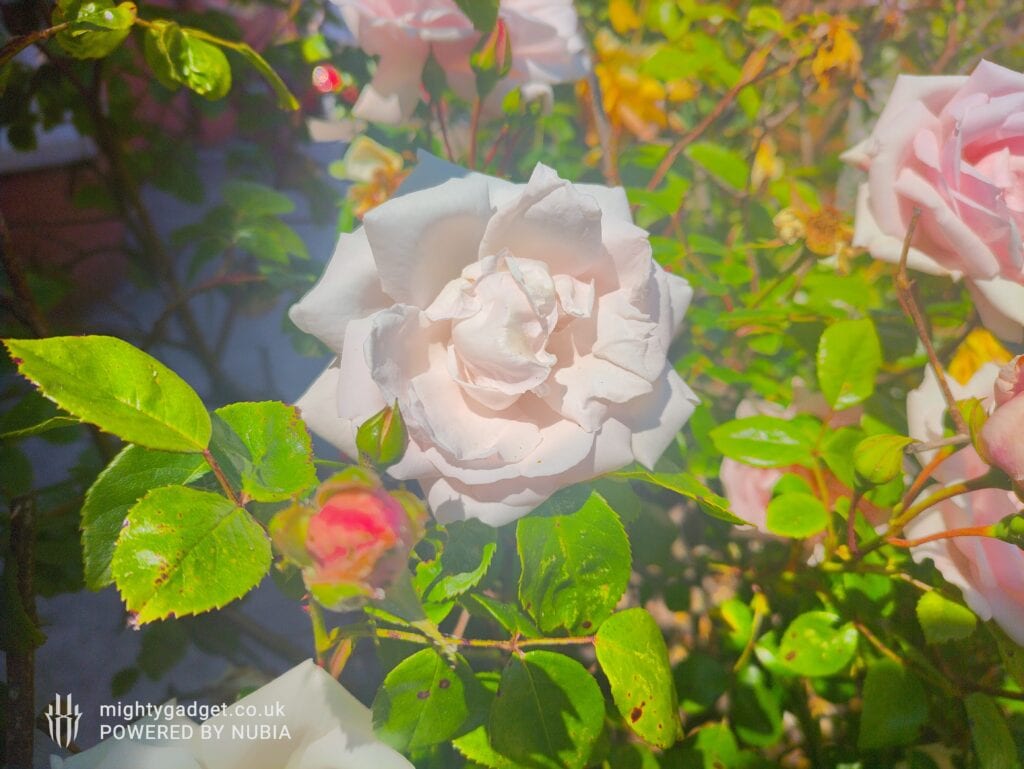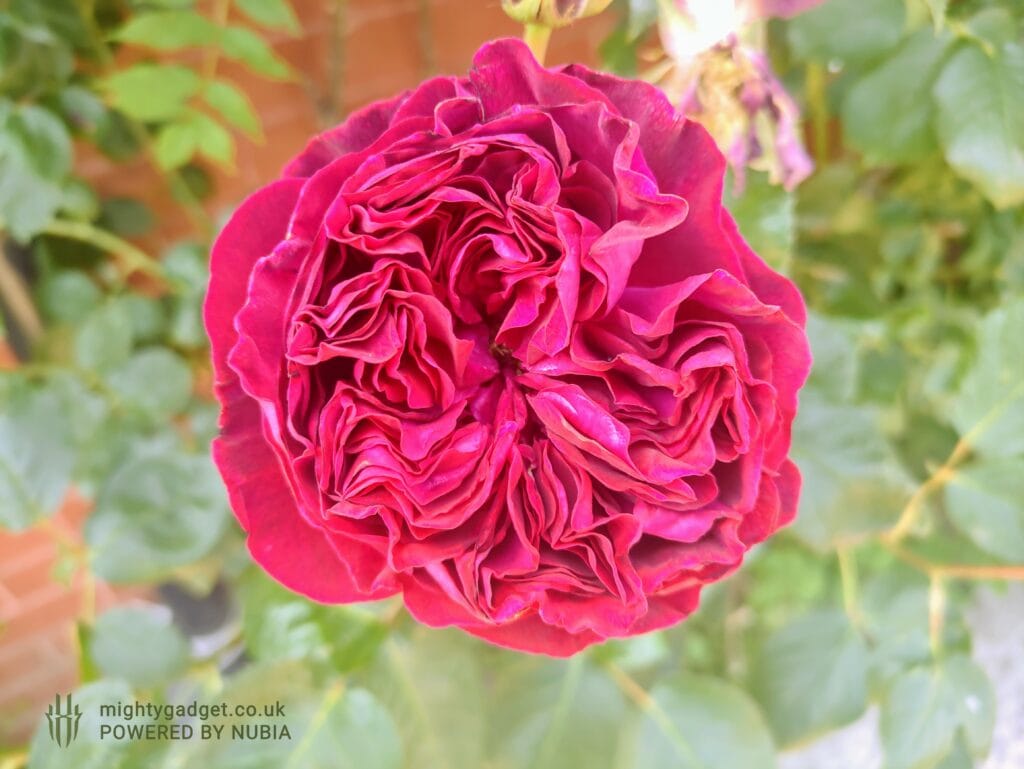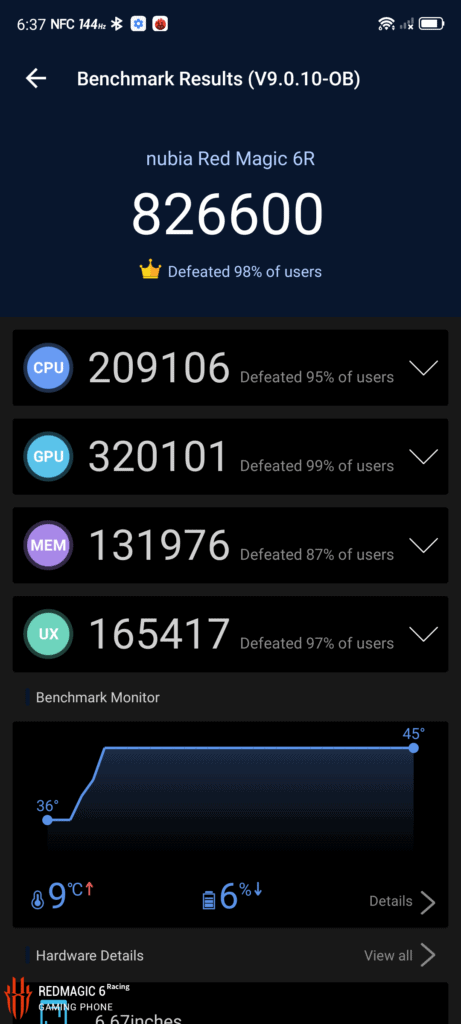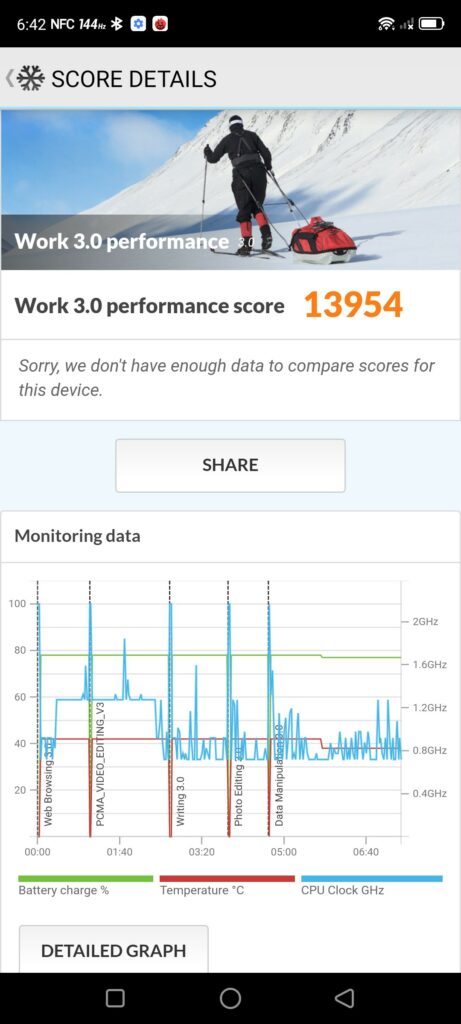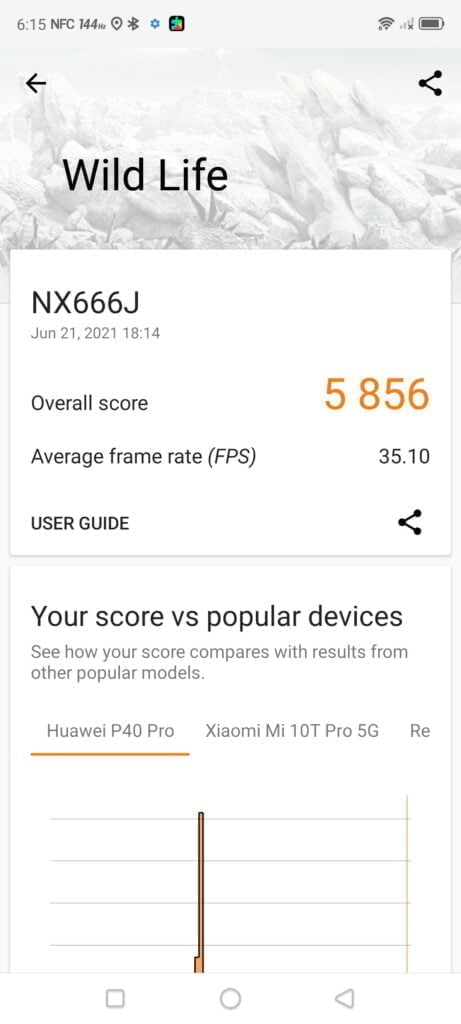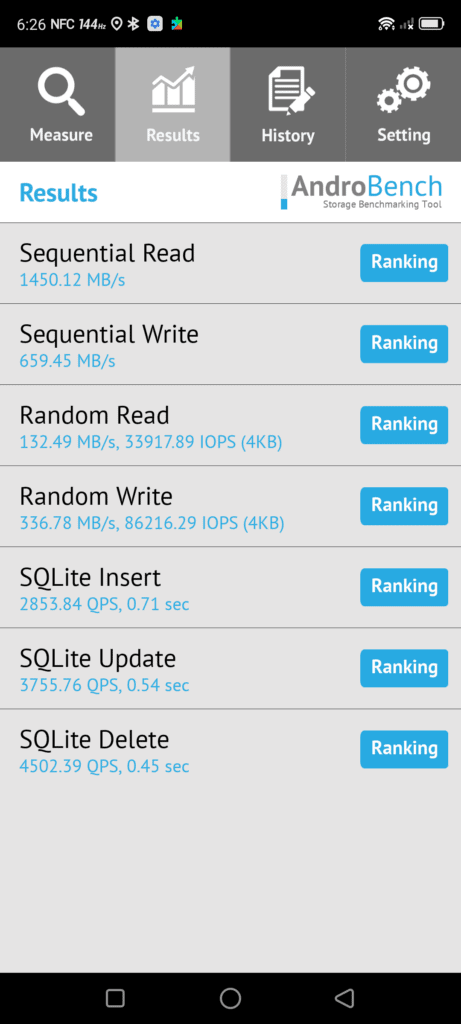Red Magic launched their new gaming focussed 6-series phones back in March. This month they added to this range with the 6R, which arrives at a lower price with a few cutbacks from the other models.
One of the stands out features of this phone is the 400Hz built-in should trigger buttons allowing you to map button presses to the shoulder.
Specification
- Display: 6.67-inch AMOLED FHD+, 144Hz refresh rate, 360Hz touch sampling rate
- SoC: Qualcomm Snapdragon 888
- RAM & Storage: 8GB LPDDR5 & 128GB UFS3.1 (review sample) or 12GB/256GB option
- Rear Camera:
- 64MP Sony IMX682, f/1.8
- 8MP f/2.2, ultra-wide
- 5MP f/2.4 macro
- 2MP f/2.4 depth
- Front Camera: 16MP f/2.0
- Battery: 4200mAh with 30W charging
- RRP: £429 for the base model
Nubia Red Magic 6R vs 6 vs 6 Pro
-

Red Magic 6R -
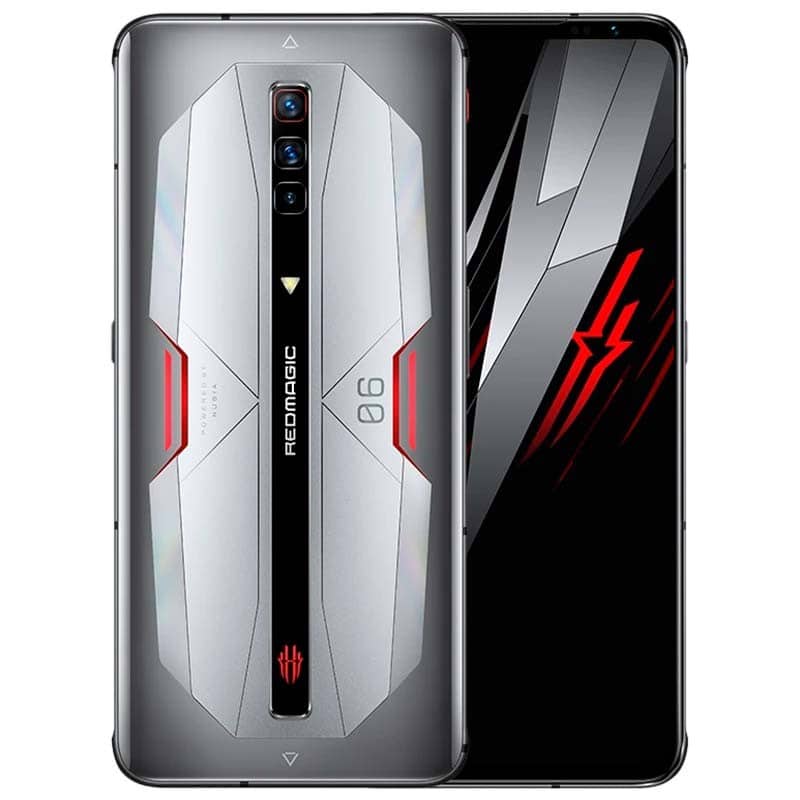
Red Magic 6
The latest Red Magic phones come in three variants, with this being the most affordable. All the phones use the SD888 chipset and have 400Hz built-in should trigger buttons.
The Red Magic 6 and 6 Pro appear to be identical in the UK, but the Pro model gets 16 GB LPDDR5 and 256 GB UFS3.1. The Chinese Pro model has 120W charging but a smaller battery.
The UK models both have 5050mAh with 66W quick charging
Both these phones have a 6.8-inch 165Hz display with sampling rates of 500Hz single touch and 360Hz multi-touch.
The more affordable Nubia Red Magic 6R drops the spec a small amount with:
- Smaller display with a slower refresh rate
- Slightly different camera set up that is technically better, switching from a Samsung senor to the Sony sensor
- Loses a stereo speaker
- Smaller 4200mAh with slower 30W charging
So, you don’t lose out on much, but gamers will definitely appreciate the larger display with a faster refresh rate and bigger battery on the other models.
Nubia Red Magic 6R vs Realme GT & Black Shark 4
As soon as I looked at the spec and price of this phone, it immediately reminded me of the Realme GT which I reviewed recently and the Black Shark 4 (which I have not used). The three phones launch at a similar price of £429 for the Red Magic and Black Shark 4 while the Realme GT is 449 Euros
Each phone has its advantages and disadvantages
The Black Shark 4 has a better spec than the Red Magic 6R for most things, apart from it uses the Snapdragon 870, which is a slower chipset based on last years SD865 and also has a lower specced camera. However, it has the same sized display vs the Redmagic but with a faster refresh rate, pop up shoulder buttons, a larger battery and faster charging. It only has USB-C 2.0, so you won’t be able to pair it up with a monitor in the same way as the Red Magic.
For the Red Magic 6R you have a larger display than the Realme with a faster refresh rate and the included touch-sensitive shoulder triggers. The USB port is USB-3.0 and display port compatible. This will likely make this more appealing to people specifically wanting a gaming phone. It also has a better 64MP camera sensor vs the Black Shark
The Realme GT has a larger battery with faster charging and also has a 3.5mm headphone jack. It is also slightly cheaper vs the other two while also looking more attractive and having a superior build quality. So this phone will be more appealing to general users wanting a great phone at a bargain price.
Design & Display
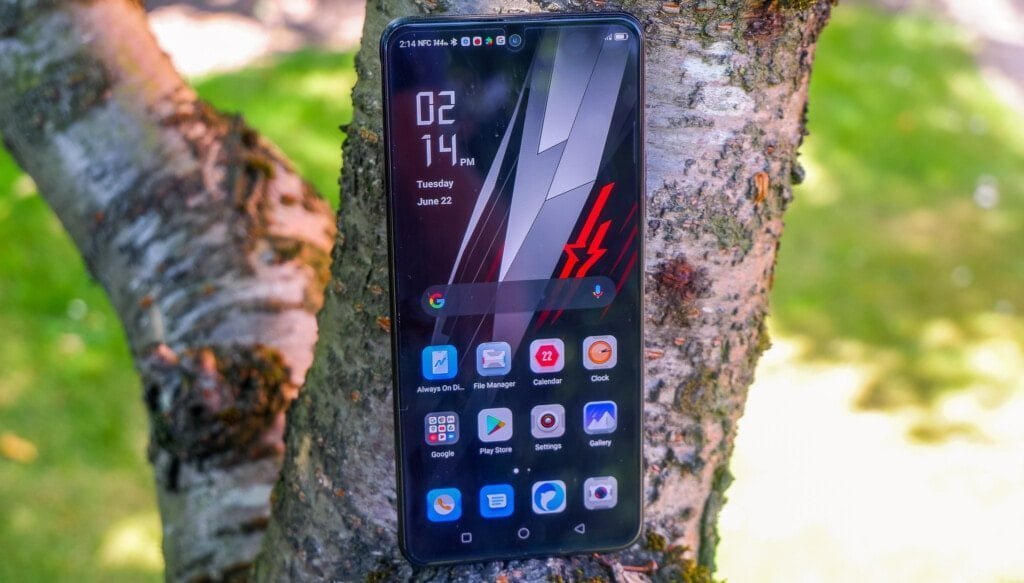
The overall design and build quality is much more like a mid-range phone rather than a phone with a flagship Qualcomm chipset. I don’t regard this as a particularly bad thing, this is an affordable phone, after all, and they need to cut costs somewhere.
The display uses a dewdrop notch, and there is a moderately large bezel making it look a little dated in the quick-moving world of phones. The bezel is probably the same size as the Realme GT, and the notification bar by default blacks out, so the end result is something quite similar.
The display itself is good, it looks fantastic when indoors playing games, and you can switch between the different refresh rates allowing you to extend the battery life or favour the ultra-fast interface. One issue I had was outdoor screen brightness, especially in the photo app, it was significantly worse than my OPPO Find X3 Neo.
One thing that stands out with this phone is the touch-sensitive shoulder buttons. They are easy to miss at first, the paint on the phone goes from shiny to a brushed/matte look, nothing else really distinguishes it from the rest of the phone. It is a less impressive solution than the physical buttons on the Black Shark 4.
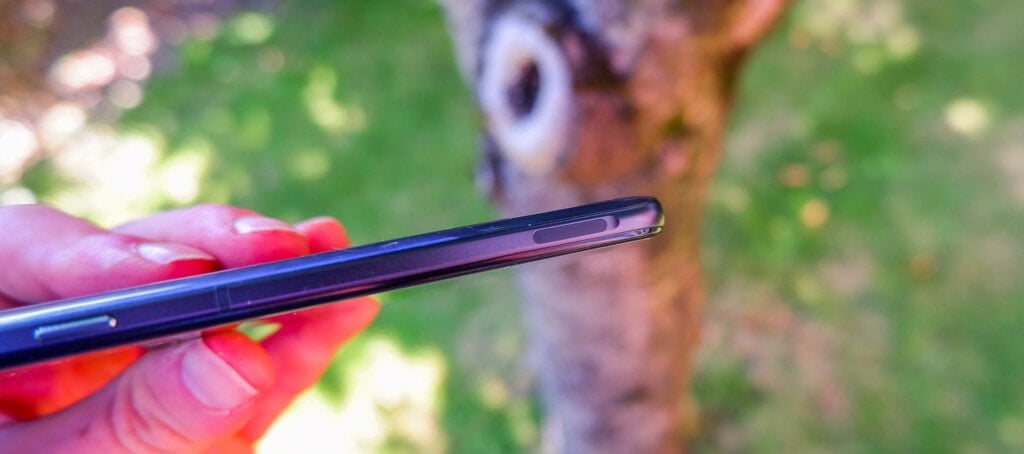
The rear of the phone is plastic, so it feels a little cheap, but other than that has no negative consequences and will be more smash resistant than a glass back.
The rear casing also has a variety of angular graphics giving it that gamer look, and the phone comes with a clear plastic case which should offer reasonable protection.
There is no 3.5mm headphone jack, this has become the norm for a lot of phones nowadays but I would have thought it would be something that is included on a affordable gaming focussed phone.
Camera
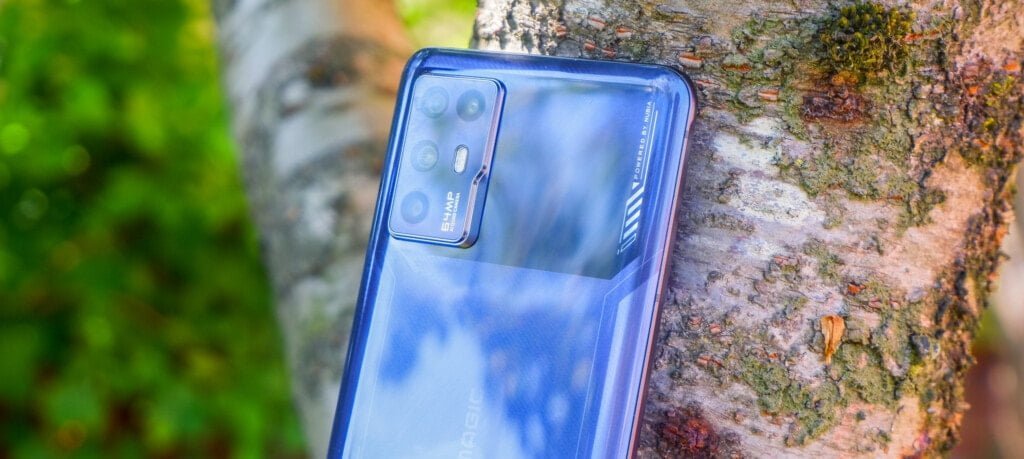
The camera on the phone is decent enough. It is basically the same spec as the Realme GT.
You have one good lens, the 64MP Sony IMX682, which is a very competent sensor even if it is a bit dated. The actual performance from this camera isn’t as good as the Realme. I have only had a limited amount of time to test the camera with this phone, and it has been very sunny, so it could be the issues with screen brightness making it hard to get great shots. Performance is generally OK, though, and it is unlikely that you are buying this phone just for its camera.
For the 8MP ultra ultrawide, for some bizarre reason, there is no option to use it in the standard photo mode. You have to switch to Pro mode before the toggle shows. If I had this phone permanently, the ultrawide would just never get used. When you do use it, it is OK, it is the same middling sensor used in many phones, but you also lose the HDR features of the standard shooting mode.
The other two lenses are forgettable additions that offer little meaningful use. Just like all other phones with these third and fourth camera sensors.
Camera Samples
Performance
All phones with the SD888 and fast refresh rate screens offer incredible performance, so it is no surprise this also does.
As for benchmarks, they are so good it is almost suspicious. In Antutu v9, this scores 826600, which is higher than the current top device on Antutu, the Realme GT 12GB/256GB, which has 822869. My 8GB/128GB Realme GT scored 797855
In 3DMark Wild Life, the Red Magic 6R scores an impressive 5856, whereas my Realme GT scores 5850.
Interestingly, the PC Mark results are much lower than the Realme, but I have always found this benchmark to offer very different results between brands.
Geekbench results are superb, essentially the same as other phones with the chipset. The storage speeds are also excellent, offering comparable performance to both the OnePlus 9 Pro and Realme GT.
Thermal Throttling
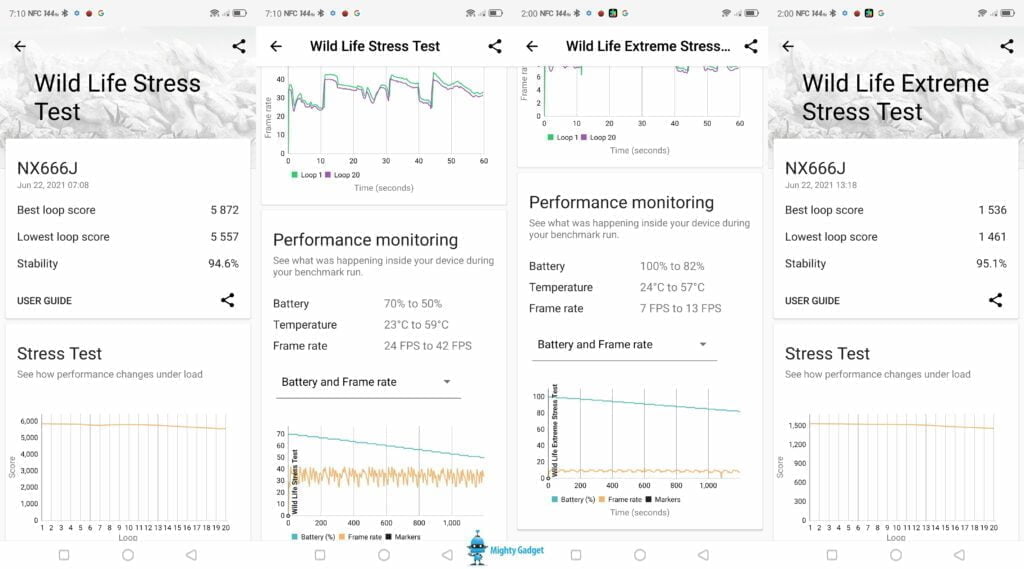
The incredible power of the Qualcomm Snapdragon 888 comes with a few caveats. It is not very power efficient, which reduces the battery life, and in all the phones I have stress tested has caused significant thermal throttling.
The Nubia Red Magic 6R is the first phone with the SD888 that gets through the Wild Life Strest Test with minimal degradation to performance. The best loop it scores is 5872 which the worst is 5557, giving it a stability score of 94.6%.
The big caveat to this is that the entire phone is warm to touch at the end of it. The results stated that the battery went from 23°C to 59 °C while the battery went from 70% to 50%.
In comparison, the Realme GT went from 27°C to 47 °C, with the battery dropping 75% to 62%. The OnePlus 9 Pro only allowed the temperature to reach 41 °C, and the battery only dropped from 98% to 88%.
The Red Magic 6R is clearly favouring performance over all else. At this point, it is probably worth pointing out that Red Magic sell a large attachable cooling fan for its two others phones, and I would expect them to offer something similar for this.
How much the thermal throttling on other devices affects real-world usage remains in question. Subjectively, I can’t say I noticed much difference in performance with this and the Realme GT when playing Genshin Impact, it is possible the Realme lowered frame rates more often, but not enough to ruin the flow of the game.
It is worth noting that the more expensive Red Magic 6 and 6 Pro both have a built-in fan, so it would be interesting to see how much that affects how high that temperature gets.
Battery
This has one of the smallest batteries on phones with the Snapdragon 888, especially considering it has a moderately large 6.67-inch display, so I had low expectations.
Running the PC Mark Battery 3.0 Test, I woke up to find it had failed. Looking at the battery stats it appears to have failed at around 8h 28mins, and the battery was at 20%, which is when the test normally stops.
If that time is accurate, that will place it about the same as the OnePlus 9 Pro I reviewed earlier in the year, so technically not that bad, but much lower than I would like personally.
As we saw with the gaming stress tests, it is very lenient with its thermal throttling, so the stress tests showed a much higher battery drain than competing models.
I can’t say for sure how this translates to real-world usage, but subjectively it does appear to drain the battery faster than my Relame when playing taxing games such as Genshin Impact. Of course, this also means it should maintain frame rates better.
The wired charging is only 30W, which is very slow when you look at the Black Shark 4. However, it is still a decent charge speed, and unlike Realme/Oppo/Huawei, it doesn’t use a proprietary charging tech, so any power delivery plug rated at 30W should work.
Software
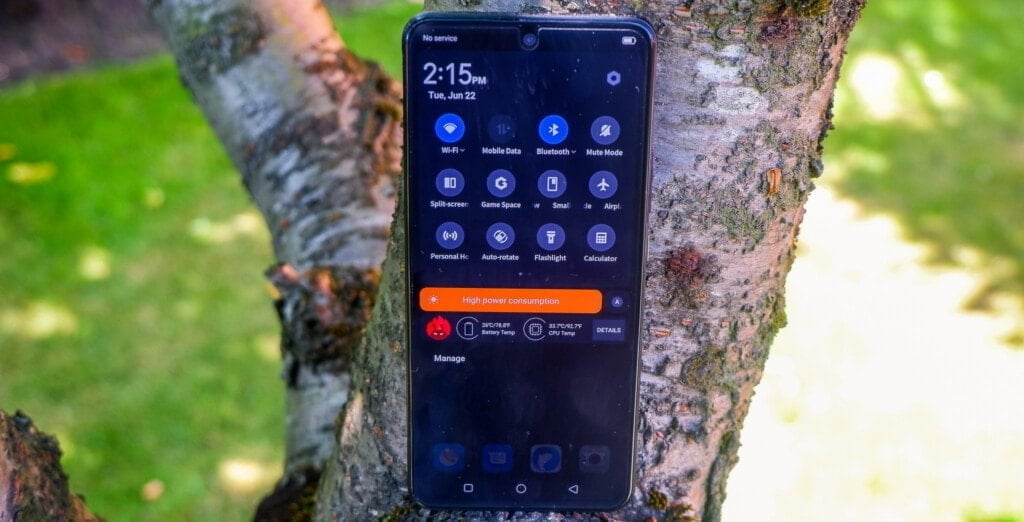
This is my first experience with a Red Magic phone and its UI. It is a bit of a mixed bag.
There is a pleasant lack of bloatware on the phone which is the stand out feature of the software. There is barely anything installed on the phone. The only strange modification is the switch from Google Chrome to the NextWord Browser. I have never heard of this browser before, but it is designed to help people learn new languages (English/Chinese).
The overall UI has gamers aesthetic about it, it is not so much that it is bad, but it looks a bit like someone installed a community made skin to the launcher.
As stated earlier, it is very strange that the main camera mode lacks a toggle for ultrawide. Lots of little parts of the software feel unpolished.
It is also not possible to switch to a third-party launcher.
Shoulder Triggers / Gaming
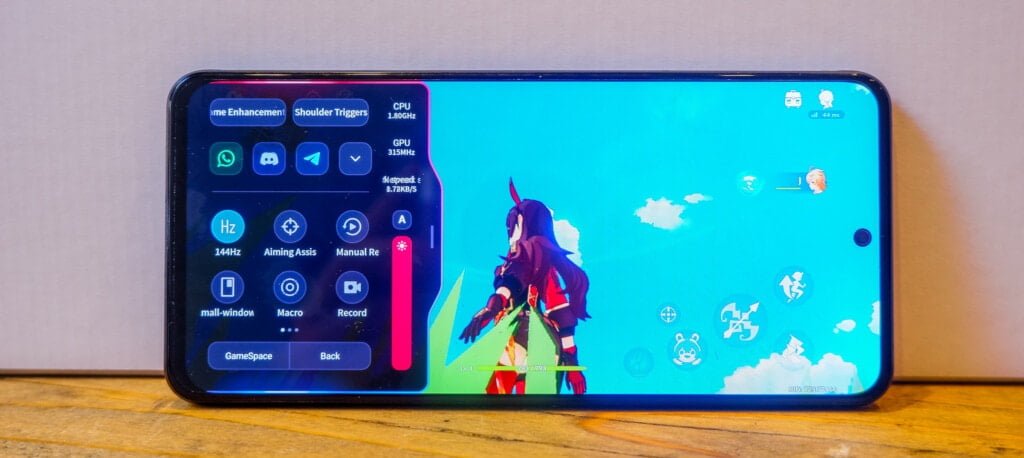
When gaming, you can use the Game Space. You can enable Game Space via the notifications panel, and then when in a game, you can swipe twice to load it up. From here, you have various options.
The main feature is being able to map buttons to the should triggers. This works flawlessly and is a superb addition to the phone. I mapped it to the action/shoot button on Genshin, and it helps keeps your fingers off the screen and improve response times. The shoulder buttons can provide haptic feedback, which is not as good as the physical press of the Black Shark 4, but you at least get some sort of feedback.

You then also have various options, such as display an on-screen FPS count and the ability to switch the refresh rate.
Overall, the Game Space does add genuine value to the phone.
Overall
I clearly have a bias towards devices that offer excellent value for money. With only one other phone on the market with the SD888 close to this pricing then I had a positive opinion before I even touched the phone.
It is very much a gamer’s phone, camera performance is merely OK, and the whole UI has a gamer aesthetic, not to mention the shoulder triggers.
The overall software and UI needs to mature a bit. Not having ultra-wide in the main camera mode is extremely annoying. Though, credit needs to be given for the lack of bloatware.
The build quality is decent, but the plastic back does make it feel very cheap compared to more expensive models, something I doubt gamers will care about.
Thanks to the larger screen, shoulder buttons and lack of thermal throttling, this offers a superior gaming experience to the Realme GT. These are the main reasons why I would buy this phone.
Of course, the Black Shark 4 looks very appealing when compared to this. I have not used it, so I can’t compare it accurately, but the SD870 won’t be quite as good but should offer superior battery performance.
Posted by Mighty Gadget Blog: UK Technology News and Reviews


